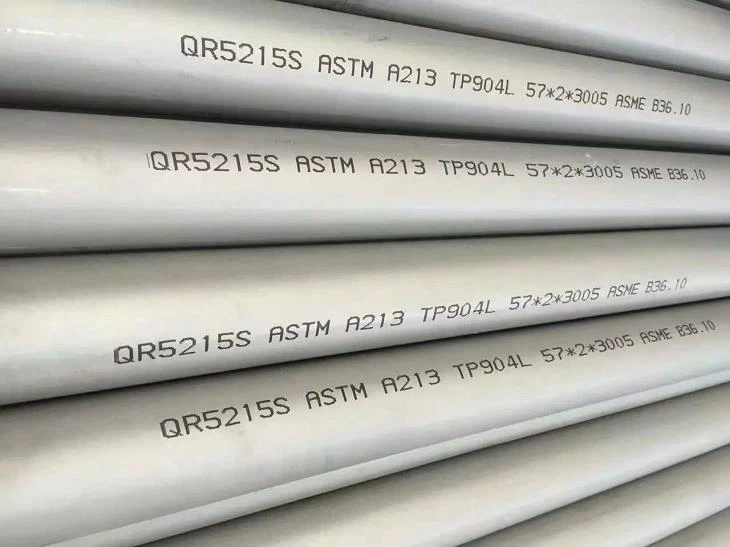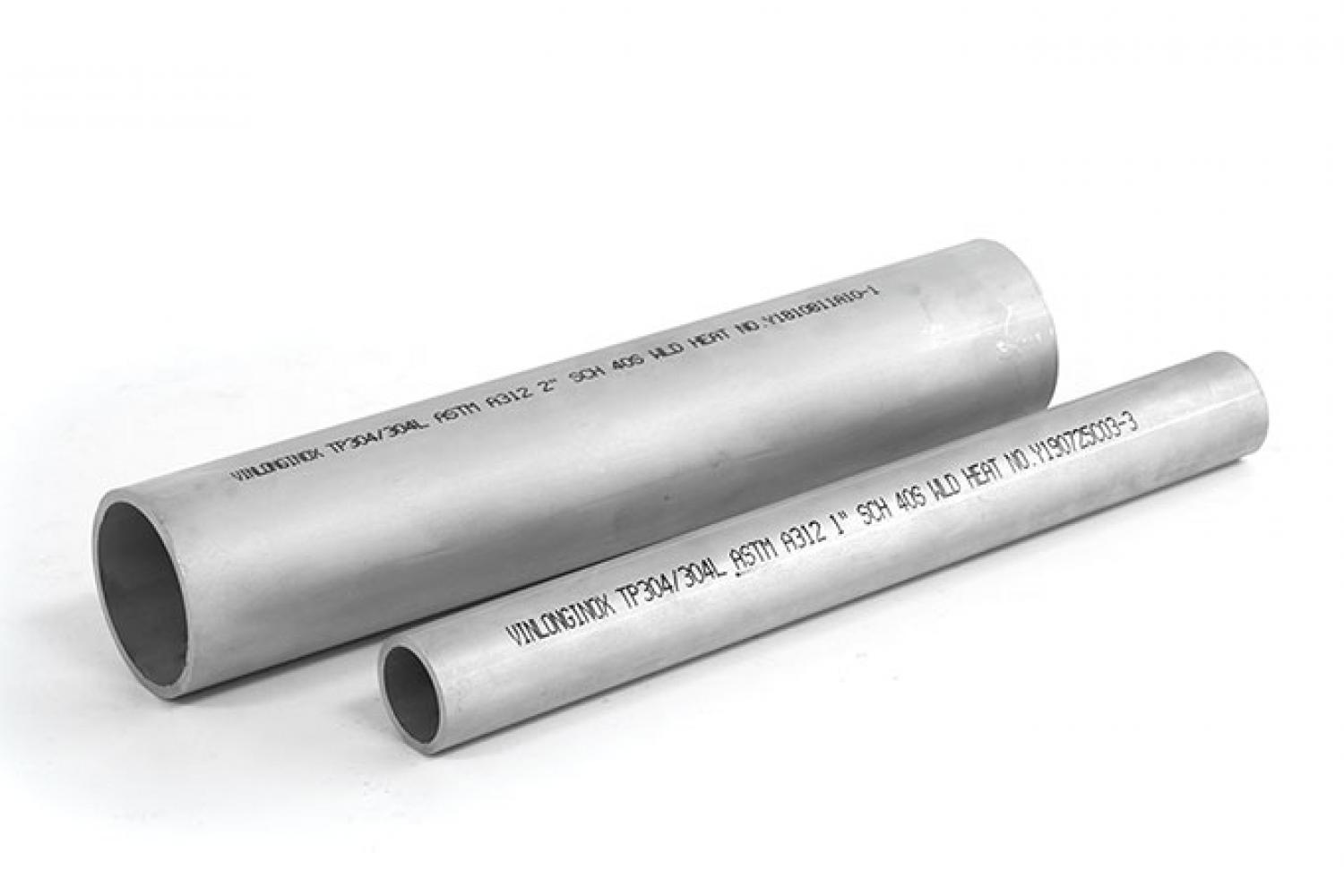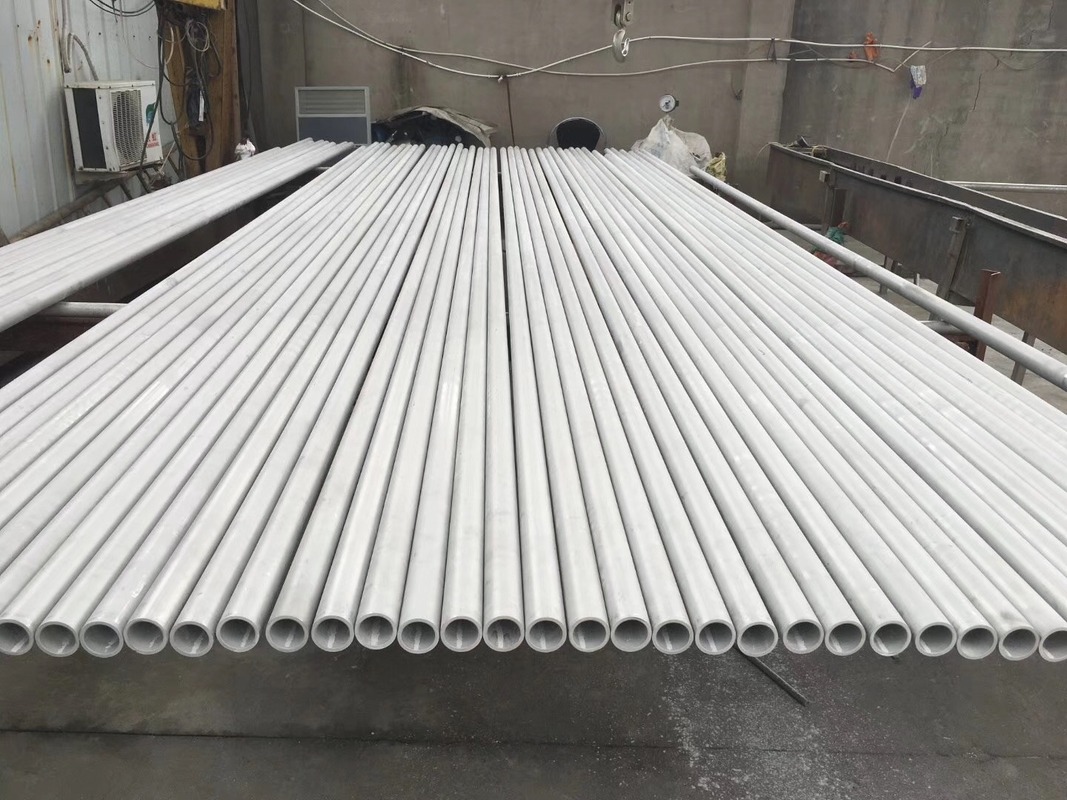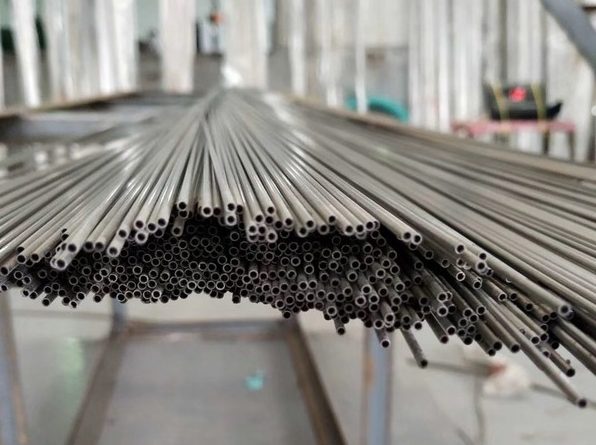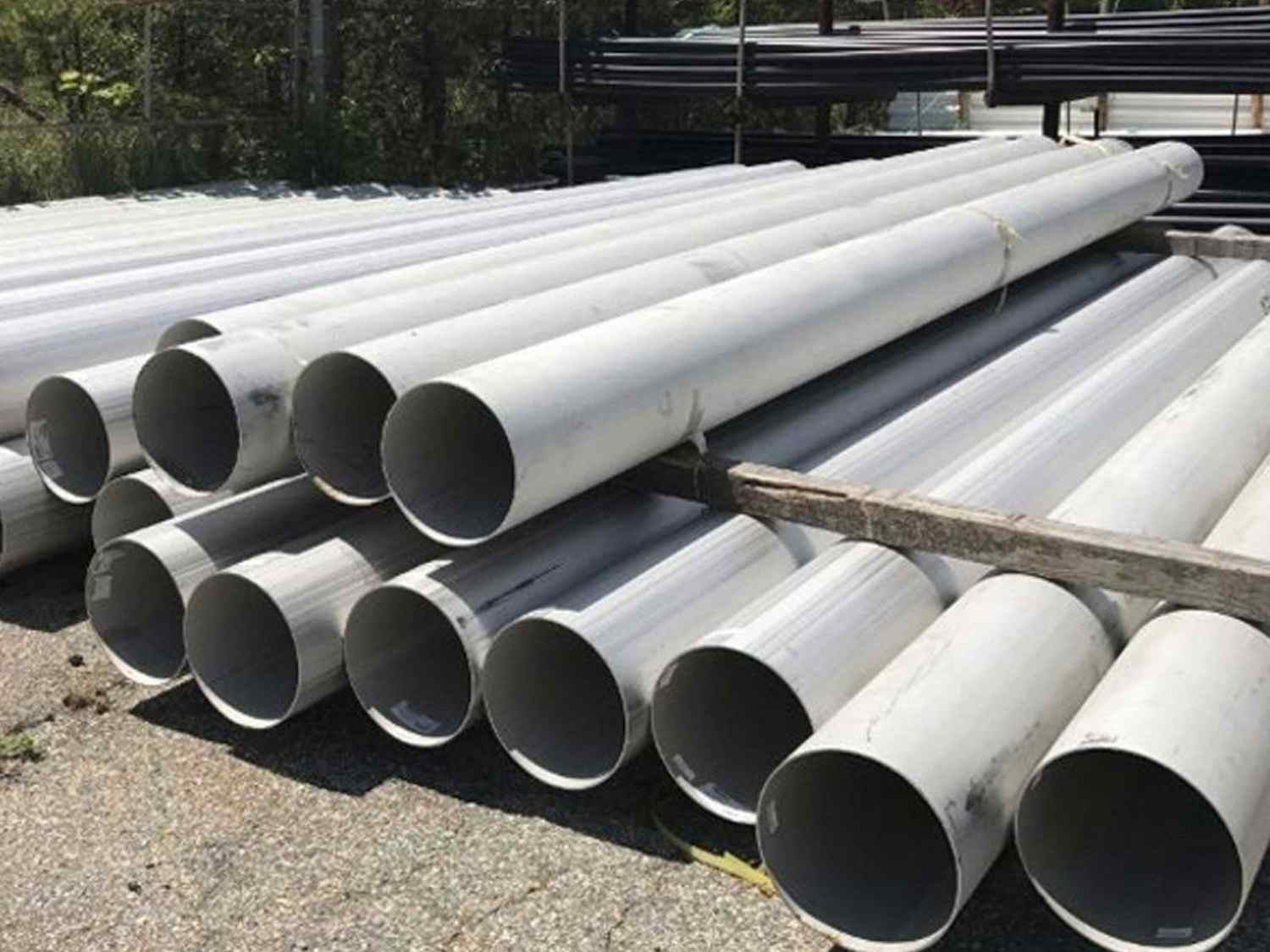309/309S Ống hàn bằng thép hợp kim cho dịch vụ nhiệt độ cao
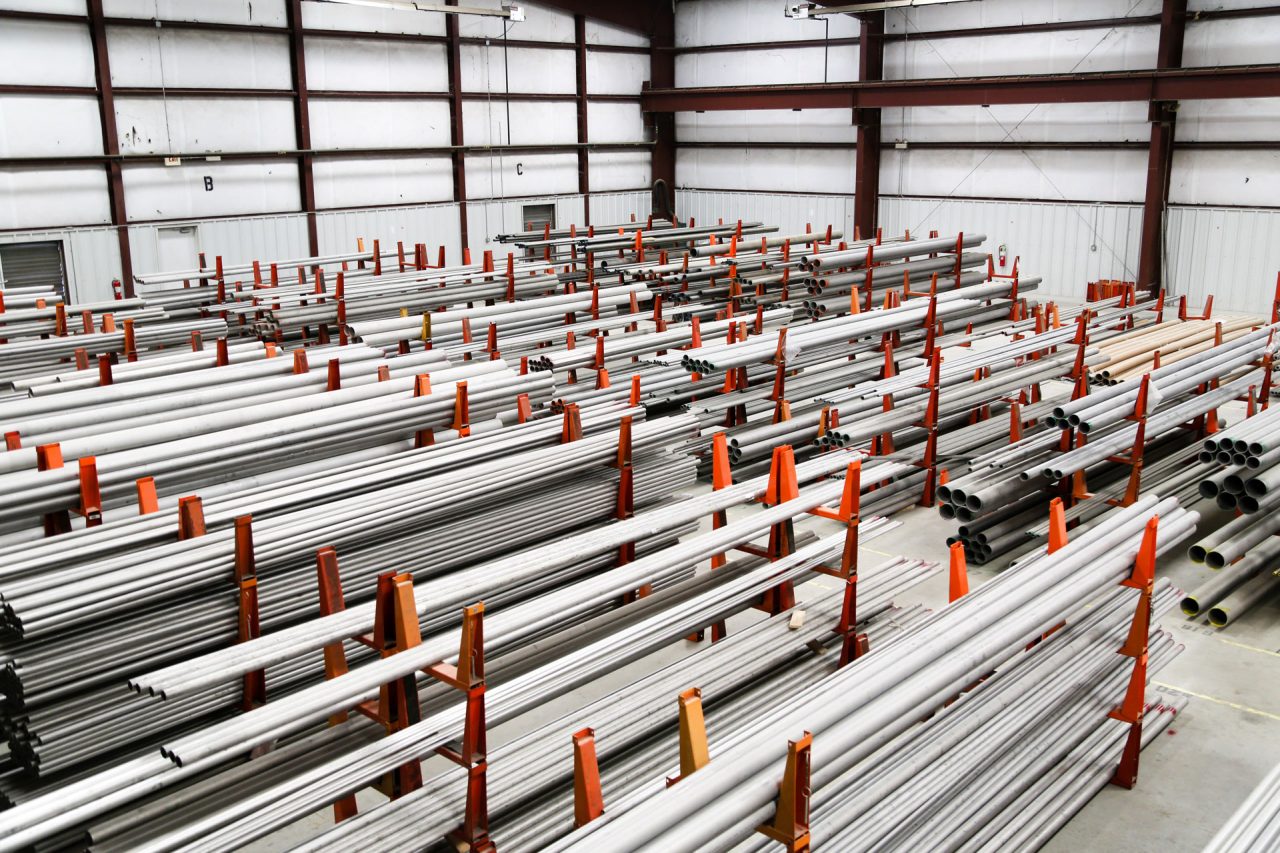
Phân tích khoa học của hợp kim 309 và hợp kim 309s ống thép không gỉ cho dịch vụ nhiệt độ cao
hợp kim 309 (Hoa Kỳ S30900) và hợp kim 309s (Hoa Kỳ S30908) là thép không gỉ crom-nickel austenit nổi tiếng nổi tiếng với hiệu suất đặc biệt của chúng trong môi trường nhiệt độ cao. Các hợp kim này được thiết kế đặc biệt cho các ứng dụng trong đó khả năng chống oxy hóa, sức mạnh nhiệt độ cao, và khả năng chống ăn mòn là rất quan trọng. Công ty chúng tôi chuyên sản xuất ống thép không gỉ hàn từ các hợp kim này, Được thiết kế riêng cho dịch vụ nhiệt độ cao trong các ngành công nghiệp như hóa dầu, phát điện, và sản xuất lò. Sự khác biệt chính giữa hợp kim 309 và 309S nằm trong hàm lượng carbon; 309S có mức carbon thấp hơn để tăng cường khả năng hàn và giảm thiểu kết tủa cacbua trong quá trình hàn, đặc biệt thuận lợi cho các công trình ống hàn. Về mặt khoa học, cấu trúc austenitic của các hợp kim này, ổn định bởi nội dung niken cao, Đảm bảo độ dẻo và độ bền ngay cả ở nhiệt độ cao. Hàm lượng crom tạo thành một lớp oxit bảo vệ chống lại tỷ lệ và quá trình oxy hóa lên đến 1900 ° F (1038°C) trong dịch vụ liên tục và 2000 ° F (1093°C) trong dịch vụ không liên tục. Trong các đường ống hàn, Điều này có nghĩa là hiệu suất đáng tin cậy trong bộ trao đổi nhiệt, ống nồi hơi, và các ống rạng rỡ nơi đạp xe nhiệt phổ biến. Các quy trình sản xuất của chúng tôi liên quan đến hàn hợp hạch điện (EFW) hoặc hàn hồ quang ngập nước (CÁI CƯA), Đảm bảo tích hợp liền mạch mà không ảnh hưởng đến các thuộc tính vốn có của hợp kim. Phân tích vi cấu trúc cho thấy một ma trận austenitic hoàn toàn với ferrite delta tối thiểu, giúp tăng cường khả năng chống lại sự hấp thụ pha sigma trong quá trình tiếp xúc kéo dài. Mô hình nhiệt động bằng cách sử dụng phần mềm như Thermo-CalC dự đoán sự ổn định pha, Xác nhận sự vắng mặt của các pha có hại dưới 1500 ° F. Các xét nghiệm điện hóa trong môi trường nhiệt độ cao mô phỏng cho thấy tốc độ ăn mòn thấp, ít hơn 0.1 mm/năm trong khí quyển mang lưu huỳnh. Các ống hàn của chúng tôi có sẵn trong lịch trình từ 10 ĐẾN 160, Đường kính từ 1/2″ đến 24″, và chiều dài lên đến 12 mét, có thể tùy chỉnh cho các ứng dụng cụ thể. Đảm bảo chất lượng bao gồm kiểm tra thủy tĩnh, Kiểm tra siêu âm, và kiểm tra hiện tại eddy để phát hiện các khuyết tật hàn. Cân nhắc về môi trường kết hợp với phế liệu tái chế trong việc tan chảy, Giảm dấu chân carbon. Các nghiên cứu so sánh với loại 304 tiết lộ hiệu suất nhiệt độ cao vượt trội so với 309/309s, mặc dù với chi phí cao hơn do các yếu tố hợp kim tăng. Phần giới thiệu này làm nổi bật nền tảng khoa học và tiện ích thực tế của hợp kim của chúng tôi 309 và 309 đường ống hàn, Đặt giai đoạn phân tích chuyên sâu.
Năng lực khoa học của các hợp kim này bắt nguồn từ thành phần cân bằng của chúng, nơi crom (22-24%) và niken (12-15%) Tăng cường khả năng chống oxy hóa hiệp đồng thông qua sự hình thành thang đo CR2O3 ổn định, bằng chứng bằng động học oxy hóa parabol với hằng số tốc độ khoảng 10^-12 g²/cm⁴/s ở 1000 ° C. Đối với ống hàn, Vùng bị ảnh hưởng bởi nhiệt (HAZ) Duy trì tính toàn vẹn do carbon thấp trong 309S, ngăn chặn sự nhạy cảm và ăn mòn giữa các hạt. Các bài kiểm tra vỡ creep cho thấy các phần mở rộng cuộc sống vượt ra ngoài 10,000 giờ ở 1200 ° F dưới 10 KSI căng thẳng, được quy cho việc tăng cường giải pháp rắn. Tính chất mệt mỏi, với giới hạn độ bền vượt quá 200 MPa, Đảm bảo độ bền trong môi trường rung như ống xả tuabin. Sản xuất của chúng tôi sử dụng độ trễ vòng cung chân không cho độ tinh khiết, với mức độ tạp chất bên dưới 50 ppm cho oxy và nitơ. Kiểm tra kim loại bằng kính hiển vi quang học cho thấy các hạt cân bằng (ASTM 4-8), Tối ưu hóa đẳng hướng cơ học. Trong các ứng dụng như lò nung, Các đường ống của chúng tôi chịu được khí quyển chứa khí, hình thành các cacbua bảo vệ mà không cần ôm. Đánh giá không phá hủy (Nde) giao thức, bao gồm kiểm tra X quang theo các tiêu chuẩn ASME, đảm bảo các mối hàn không khuyết tật. Tính bền vững được ưu tiên thông qua hệ thống sưởi cảm ứng tiết kiệm năng lượng trong quá trình hàn. Tổng quan mở rộng này nhấn mạnh sự xuất sắc về kỹ thuật được nhúng trong các sản phẩm của chúng tôi, tạo điều kiện cho các giải pháp nhiệt độ cao tiên tiến.
Mô tả sản phẩm
Hợp kim của chúng tôi 309 và 309 ống thép không gỉ hàn được thiết kế để thực hiện vượt trội trong dịch vụ nhiệt độ cao, Cung cấp một giải pháp mạnh mẽ cho các ứng dụng công nghiệp đòi hỏi. Những đường ống này được sản xuất bằng các kỹ thuật hàn tiên tiến như TIG, TÔI, và đã thấy, Đảm bảo các mối hàn chất lượng cao với sự thâm nhập đầy đủ và biến dạng tối thiểu. Có sẵn trong các tương đương liền mạch nhưng tập trung vào các hình thức hàn cho hiệu quả chi phí trong đường kính lớn hơn, Các đường ống của chúng tôi từ NPS 1/2″ đến 24″, với độ dày tường từ Sch 5s đến Sch 160, và độ dài tùy chỉnh lên đến 40 bàn chân. Bề mặt hoàn thiện có thể được ngâm, Ăn, hoặc được đánh bóng để tăng cường khả năng chống ăn mòn và thẩm mỹ. hợp kim 309 Cung cấp sức mạnh tuyệt vời ở nhiệt độ lên đến 1900 ° F, Trong khi hàm lượng carbon thấp của 309S (0.08% tối đa) cải thiện khả năng hàn, làm cho nó trở nên lý tưởng cho các cấu trúc bịa đặt. Về mặt khoa học, Quá trình hàn được tối ưu hóa để kiểm soát đầu vào nhiệt bên dưới 1.5 KJ/mm, Ngăn chặn sự phát triển hạt quá mức trong HAZ theo dự đoán sơ đồ của Schaeffler. Độ dẫn nhiệt ~ 15 W/m · K ở nhiệt độ phòng đảm bảo truyền nhiệt hiệu quả trong hệ thống thu hồi nhiệt. Mật độ tại 7.89 G/cm³ cung cấp tỷ lệ sức mạnh trên trọng lượng thuận lợi. Các đường ống của chúng tôi trải qua điều trị nhiệt sau chiến binh ở 1900-2100 ° F, sau đó là làm nguội nhanh để phục hồi khả năng chống ăn mòn. Các ứng dụng bao gồm lớp lót lò nung, nơi khả năng chống sốc nhiệt vượt quá 500 chu kỳ mà không bị nứt. Trong bánh quy hóa dầu, Họ xử lý các luồng hydrocarbon ở 1800 ° F, Chống lại Coking thông qua các bổ sung silicon. Cho các nhà máy điện, ống siêu nhiệt nồi hơi được hưởng lợi từ khả năng chống leo, với các thông số Larson-Miller cho thấy sự ổn định dài hạn. Kiểm soát chất lượng tích hợp kiểm tra độ bền kéo trên mỗi ASTM E8, mang lại giá trị nhất quán. Tùy chỉnh bao gồm các đầu vát để cài đặt dễ dàng. Tác động môi trường được giảm thiểu thông qua các hệ thống nước khép kín trong Pickling. Phân tích so sánh với hợp kim 310 hiển thị hiệu suất tương tự nhưng 309 Niken thấp hơn cho tiết kiệm chi phí. Mô tả này minh họa cam kết của chúng tôi trong việc cung cấp đáng tin cậy, Ống hàn hiệu suất cao.
Để đi sâu hơn, Việc chế tạo các đường ống này liên quan đến việc kiểm soát chính xác các thông số hàn, chẳng hạn như nhiệt độ giao thoa dưới 300 ° F để tránh bị nứt nóng, được hướng dẫn bởi các lý thuyết thanh lý hiến pháp. Sự tiến hóa vi cấu trúc trong quá trình hàn được theo dõi thông qua SEM, Tiết lộ các cấu trúc đuôi gai tốt trong kim loại hàn giúp tăng cường độ dẻo dai. Charpy Tác động kiểm tra ở năng lượng năng suất nhiệt độ phòng trên 100 J, chỉ ra độ dẻo tuyệt vời. Trong dịch vụ nhiệt độ cao, các đường ống’ Khả năng chống lại sunfid hóa được liên kết với hàm lượng CR cao, hình thành các lớp CRS với tỷ lệ khuếch tán thấp. Cho 309s, Carbon giảm giảm thiểu kết tủa M23C6, như được định lượng bằng sơ đồ chính thống nhiệt độ thời gian, kéo dài tuổi thọ dịch vụ trong các điều kiện nhạy cảm. Hàng tồn kho của chúng tôi bao gồm các cấu hình thẳng và uốn cong cho bộ trao đổi nhiệt, với Bend Radii chặt chẽ như 1,5D mà không nếp nhăn. Áp lực thủy tĩnh lên đến 10,000 PSI được kiểm tra, Đảm bảo tính toàn vẹn trên mỗi ASME B31.3. Các nghiên cứu trường hợp từ các ứng dụng lò cho thấy các phần mở rộng hoạt động của 20% loại quá 304 đường ống. Khả năng gia công, mặc dù thách thức (tốc độ 30-50 SFM), được quản lý bằng các công cụ tốc độ cao. Làm sạch sau lao động loại bỏ các chất gây ô nhiễm, ngăn chặn sự ăn mòn kẽ hở. Hồ sơ sản phẩm toàn diện này nhấn mạnh những lợi thế khoa học và thực tế của các ống hàn 309/309 hợp kim của chúng tôi.
Thành phần danh nghĩa hóa học
Thành phần hóa học của hợp kim 309 và 309S được xây dựng cẩn thận để đạt được các đặc tính nhiệt độ cao tối ưu. Cho hợp kim 309, carbon là lên đến 0.20%, cung cấp sức mạnh thông qua sự hình thành cacbua, trong khi mangan (2.00% tối đa) AIDS DEXIDISATION. Silicon (1.00% tối đa) Tăng cường kháng oxy hóa, phốt pho (0.045% tối đa) và lưu huỳnh (0.030% tối đa) được giới hạn trong việc ngăn chặn sự nuôi dưỡng. crom (22.0-24.0%) là chìa khóa cho khả năng chống ăn mòn, niken (12.0-15.0%) Ổn định Austenite, và sắt cân bằng hỗn hợp. Hợp kim 309S phản ánh điều này nhưng với carbon ≤0,08%, giảm rủi ro nhạy cảm. Thành phần này đảm bảo cấu trúc austenitic hoàn toàn, Không có ferrite để cải thiện sức mạnh nóng. Về mặt khoa học, Tỷ lệ CR-NI thúc đẩy sự thụ động, với giá trị pren xung quanh 25, Chống lại rỗ. Tính toán nhiệt động cho thấy solvus cacbua ở ~ 900 ° C cho 309S, hướng dẫn ủ. Trong các đường ống hàn, Thành phần đồng đều ngăn chặn sự phân tách, đạt được thông qua AOD tinh chỉnh. Phân tích quang phổ (OES) xác minh sự tuân thủ. CR cao hơn cải thiện khả năng chống sunfid, Theo lý thuyết oxy hóa của Wagner,. Các yếu tố nhỏ như n (0.10% tối đa) Đóng góp vào sức mạnh thông qua độ cứng kẽ. Nguồn tìm nguồn của chúng tôi đảm bảo phần dư thấp. So sánh với 304 (18CR-8NI) Điểm nổi bật 309 Kháng nhiệt vượt trội. Thành phần này củng cố các hợp kim’ tính linh hoạt.
Mở rộng vai trò của các yếu tố, crom tạo thành oxit spinel ở nhiệt độ cao, giảm biến động so với CR2O3 thuần túy. Niken làm giảm hệ số khuếch tán oxy trong mạng, làm chậm tăng trưởng quy mô. Carbon trong 309 Cho phép cứng thứ cấp, Nhưng trong 309s, Nó được kiểm soát để tránh sự phân rã hàn, Theo các thử nghiệm ASTM A262 cho thấy không có cuộc tấn công giữa các tế bào. Mangan liên kết lưu huỳnh, Ngăn chặn độ ngắn nóng trong quá trình hàn. Silicon thúc đẩy xỉ chất lỏng trong mối hàn, cải thiện chất lượng hạt. Phốt pho, mặc dù hạn chế, có thể tăng cường khả năng gia công trong số lượng dấu vết. Biểu đồ cân bằng cho thấy độ ổn định austenite lên đến điểm nóng chảy ~ 1400 ° C. Trong sản xuất ống, Điều chỉnh thành phần các thuộc tính tinh chỉnh cho các dịch vụ cụ thể, như tăng SI để điều trị sức đề kháng. Chứng nhận cho EN 10204 3.1 Đảm bảo truy xuất nguồn gốc. Đánh giá môi trường xác nhận khả năng lọc thấp của hợp kim. Phân tích thành phần chi tiết này cho thấy cơ sở khoa học cho hiệu suất.
| Yếu tố | hợp kim 309 Min-Max | Hợp kim 309S Min-Max |
|---|---|---|
| Cacbon (C) | – | 0.08 tối đa |
| Mangan (Mn) | – | 2.00 tối đa |
| Silicon (Và) | – | 1.00 tối đa |
| Phốt pho (P) | – | 0.045 tối đa |
| lưu huỳnh (S) | – | 0.030 tối đa |
| crom (Cr) | 22.0-24.0 | 22.0-24.0 |
| Niken (TRONG) | 12.0-15.0 | 12.0-15.0 |
| Sắt (Fe) | Sự cân bằng | Sự cân bằng |
Tính chất cơ học
Tính chất cơ học của hợp kim 309 và 309S làm cho chúng lý tưởng cho các ứng dụng ống hàn nhiệt độ cao. Ở nhiệt độ phòng, độ bền kéo xấp xỉ 620 MPa, sức mạnh năng suất 310 MPa, sự kéo dài 45%, và độ cứng 147 Brinell. Chúng xuất phát từ cấu trúc austenitic và tăng cường giải pháp rắn. Ở nhiệt độ cao, Sức mạnh giữ lại tốt, với 50% độ bền kéo phòng ở 1200 ° F. Khả năng chống creep cho phép dịch vụ ở 1500 ° F dưới căng thẳng thấp, với thời gian vỡ >1000 giờ tại 5 ksi. Sức mạnh mệt mỏi ~ 250 MPa ở 10^7 chu kỳ. Đối với ống hàn, Các thuộc tính được duy trì sau khi hàn do các chất độn phù hợp như ER309. Phân tích khoa học thông qua TEM cho thấy việc ghim trật khớp bởi các nguyên tử CR. Fracture dẻo dai kic ~ 150 mpa√m. Thử nghiệm của chúng tôi trên mỗi ASTM E21 xác nhận dữ liệu. Biến thể bằng cách xử lý nhiệt; ủ ở 1950 ° F tối ưu hóa độ dẻo. Đang phục vụ, Mở rộng nhiệt (17.3 m/m · k) được xem xét để thiết kế. So sánh với 316 cho thấy sức mạnh nhiệt tốt hơn.
Hơn nữa, hành vi creep tuân theo luật Norton-Bailey, với số mũ ~ 5 cho creep thứ cấp. Mệt mỏi nhiệt độ cao được mô hình hóa bởi Coffin-Manson, dự đoán chu kỳ dựa trên biến dạng nhựa. Mối hàn triển lãm 90% sức mạnh kim loại cha mẹ, theo các bài kiểm tra độ bền kéo ngang. Tác động đến độ bền vẫn cao, >50 J ở -100 ° C.. Mô đun đàn hồi ~ 193 GPa giảm xuống 150 GPA ở 1000 ° F.. Trong đường ống, Tính toán áp suất nổ trên mỗi Barlow Sử dụng các thuộc tính này, Đảm bảo các yếu tố an toàn >4. Các nghiên cứu lão hóa cho thấy sự suy giảm tài sản tối thiểu sau khi 10,000 Giờ ở 1400 ° F.. Hồ sơ mạnh mẽ này hỗ trợ dịch vụ số liệu cao đáng tin cậy.
| Tài sản | Giá trị | Đơn vị |
|---|---|---|
| Độ bền kéo | 620 | MPa |
| Sức mạnh năng suất (0.2% Bù lại) | 310 | MPa |
| Độ giãn dài | 45 | % |
| độ cứng | 147 | Brinell |
| Mô đun đàn hồi | 193 | GPa |
| Nhiệt độ (° F) | Độ bền kéo (MPa) | Sức mạnh năng suất (MPa) |
|---|---|---|
| Phòng | 620 | 310 |
| 1000 | 450 | 200 |
| 1500 | 250 | 120 |
| 1800 | 150 | 80 |
Thông số kỹ thuật phổ biến
hợp kim 309 và 309 đường ống hàn phù hợp với các thông số kỹ thuật chính cho dịch vụ nhiệt độ cao. ASTM A312 bao gồm các ống liền mạch và hàn, với các lớp TP309 và TP309 cho dịch vụ ăn mòn chung. ASTM A358 chỉ định các đường ống EFW cho số lượng cao, với các lớp học 1-5 dựa trên hàn và thử nghiệm. ASME SA312/SA358 là tương đương cho các bình áp lực. Khác bao gồm ASTM A249 cho các ống hàn, và NACE MR0175 cho dịch vụ chua. Đường ống của chúng tôi đáp ứng những điều này, với dung sai theo tiêu chuẩn (ví dụ., ± 0,5%). Về mặt khoa học, Thông số kỹ thuật đảm bảo tính nhất quán của tài sản thông qua xử lý nhiệt có kiểm soát. Ủ ở 1900 ° F hòa tan cacbua. Kiểm tra bao gồm làm phẳng, bùng lên, và ăn mòn giữa các hạt trên A262. Chứng nhận 3.1 có sẵn. So sánh với A213 cho các ống cho thấy tương tự nhưng tập trung vào ống. Tuân thủ đảm bảo độ tin cậy.
Thông số kỹ thuật bắt buộc nde như ut cho các mối hàn, phát hiện lỗ hổng <5% độ dày của tường. Thông số xử lý nhiệt phù hợp với động học khuếch tán cho carbon. Cho 309s, Low C đảm bảo tuân thủ các yêu cầu về hàn. Hệ thống chất lượng của chúng tôi ISO 9001 được chứng nhận. Điều này đảm bảo sản phẩm xuất sắc.
| Đặc điểm kỹ thuật | Sự miêu tả |
|---|---|
| ASTM A312 / ASME SA312 | Các ống thép không gỉ austenitic liền mạch và hàn |
| ASTM A358 / ASME SA358 | Đường ống bằng thép không gỉ austenitic sợi quang điện |
| ASTM A249 / ASME SA249 | Hàn ống nồi hơi austenitic |
| NACE MR0175 | Vật liệu chống nứt căng thẳng sunfua |
Khả năng chống ăn mòn và hiệu suất nhiệt độ cao
Khả năng chống ăn mòn của hợp kim 309 và 309 trong môi trường nhiệt độ cao là nổi bật, chủ yếu là do hàm lượng crom cao tạo thành lớp oxit bảo vệ. Trong khí quyển oxy hóa, Điện trở tỷ lệ là tuyệt vời lên đến 1900 ° F, với giảm cân <1 mg/cm² sau 1000 giờ. Trong khí chứa lưu huỳnh, Các hợp kim chống ăn mòn nóng tốt hơn các loại CR thấp hơn, tạo thành sunfua ổn định. Đối với ống hàn, carbon thấp trong 309S ngăn chặn cuộc tấn công đường dao trong HAZ. Các nghiên cứu khoa học cho thấy các đường cong phân cực với dòng điện thụ động <1 μA/cm² trong axit nóng. Khả năng chống chế khí là tốt, với độ sâu <0.5 mm sau khi tiếp xúc. Nitrididation là tối thiểu trong khí quyển amoniac. Trong các ứng dụng như lò đốt, ống chịu đựng căng thẳng clorua mà không bị nứt. Các bài kiểm tra chiết áp xác nhận tiềm năng rỗ cao. Kháng chiến này kéo dài đáng kể tuổi thọ dịch vụ.
Phân tích chi tiết cho thấy thành phần tỷ lệ oxit thông qua XPS, hiển thị các lớp giàu CR với các spinel Ni để bám. Động học theo luật parabol, k_p ~ 10^-13 g²/cm⁴/s ở 1000 ° C. Trong điều kiện giảm, quá trình oxy hóa bên trong bị giới hạn bởi Ni cao. Cho 309s, tính toàn vẹn hàn được bảo tồn, Theo tỷ lệ kiểm tra Huey <0.3 mm/năm. So sánh với 310 (25CR-20NI) hiển thị tương tự nhưng lợi thế chi phí 309. Các yếu tố môi trường như độ ẩm ảnh hưởng đến hiệu suất, Nhưng hợp kim xuất sắc. Phần này làm nổi bật cơ sở khoa học cho độ bền.
Các ứng dụng trong môi trường nhiệt độ cao
hợp kim 309 và 309 ống hàn được sử dụng rộng rãi trong các ứng dụng nhiệt độ cao. Trong lò nung, Chúng phục vụ như những ống rạng rỡ và bóp nghẹt, chịu được 1800 ° F với biến dạng tối thiểu. Trong hóa dầu, Họ xử lý các nhà cải cách xúc tác, Chống lại cuộc tấn công hydro. Sản xuất điện sử dụng chúng trong các ống nồi hơi, Trường hợp sức đề kháng creep là rất quan trọng. Sử dụng hàng không vũ trụ cho các hệ thống ống xả. Xác nhận khoa học thông qua các thử nghiệm thực địa cho thấy tuổi thọ kéo dài. Trong bộ trao đổi nhiệt, Khả năng chống mỏi nhiệt vượt quá 1000 chu kỳ. Lợi ích thiêu hủy chất thải từ khả năng kháng clorua. Tính linh hoạt này là chìa khóa.
Hơn nữa, Trong lò nướng, ống vận chuyển khí nóng, với tỷ lệ oxy hóa thấp. Mô hình FEM dự đoán căng thẳng trong cài đặt. Nghiên cứu trường hợp từ các nhà máy lọc dầu cho thấy dịch vụ 5 năm mà không thất bại. So sánh với kim loại nổi bật gốm sứ’ độ dẻo. Các ứng dụng trong tương lai trong nhiệt mặt trời. Điều này thể hiện tiện ích thực tế.
Đặc điểm hàn
Hàn hợp kim 309 và đường ống 309S đơn giản với các quy trình tiêu chuẩn như GTAW, Sử dụng chất độn ER309. Đầu vào nhiệt thấp giảm thiểu biến dạng. 309S Low Low C làm giảm sự nhạy cảm. Tùy chọn sau khi ủ cho hầu hết. Phân tích khoa học cho thấy cấu trúc kim loại hàn với delta ferrite ~ 5% cho khả năng chống nứt. Độ cứng tính bằng haz ~ 200 hv. Mệt mỏi trong các mối hàn có thể so sánh với cơ sở. Điều này đảm bảo các khớp đáng tin cậy.
Chi tiết về các tham số: Căng thẳng 100-150A, điện áp 10-15V. Khí che chắn AR+2%O2. Các xét nghiệm ăn mòn giữa các hạt thông qua. Điều này tạo điều kiện chế tạo.
So với 304, 309 cung cấp khả năng chống nhiệt tốt hơn nhưng ăn mòn chung thấp hơn. Vs 310, Tương tự nhưng NI/CR thấp hơn cho chi phí. Vs bất tiện, ít tốn kém hơn nhưng giới hạn nhiệt độ thấp hơn. Các số liệu khoa học như tỷ lệ oxy hóa ưu tiên 309 Đối với bộ cảm ứng cao vừa phải. Vị trí này tối ưu.
Chi tiết: Ở 1800 ° F., 309 Độ dày tỷ lệ 20μm so với 304. Chi phí ~ 1,5 lần 304. Điều này thông báo lựa chọn.

